#Red Billed Hornbill
Explore tagged Tumblr posts
Text


They'rethesamepicture.gif
43 notes
·
View notes
Text
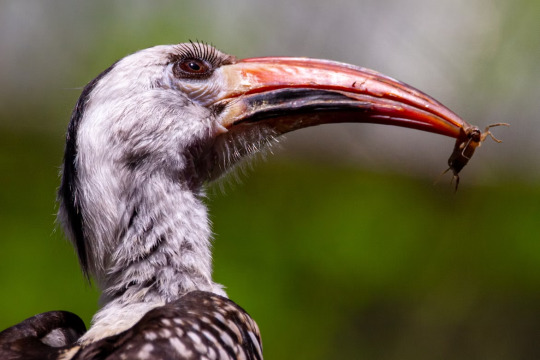
Red-billed Hornbill - Memphis Zoo, Prentiss Place, Memphis, Tennessee, USA
Joshua J. Cotten
Common Name: Red-billed hornbill
Kingdom: Animalia
Phylum: Chordata
Class: Aves
Order: Bucerotiformes
Family: Bucerotidae
Genus Species: Tockus erythrorhynchus
These birds can be found in Angola, Botswana, Cameroon, Central African Republic, Chad, Ethiopia, Gambia, Ghana, Guinea, Kenya, Malawi, Mali, Mauritania, Mozambique, Namibia, Niger, Nigeria, Senegal, Somalia, South Africa, South Sudan, Sudan, Tanzania, Uganda, Zambia, and Zimbabw
The red-bill lives in open savanna, woodland and thorn scrub in sub-Saharan Africa. It is an omnivore, eating fruit, insects and small animals. Hornbills are named because the shape of their bill reminded early people of cattle horns.
#Memphis Zoo#Prentiss Place#Memphis#Tennessee#USA#US#TNWildlife#Wildlife#Birds#Bird#United States#United States of America#North America#Red Billed Hornbill#Red-billed Hornbill#Zoo#Animalia#Chordata#Aves#Bucerotiformes#Bucerotidae#Tockus erythrorhynchus
5 notes
·
View notes
Text

A southern red billed hornbill (Tockus rufirostris) preens itself in Kruger National Park, South Africa
by Sumarie Slabber
#southern red billed hornbill#hornbills#birds#tockus rufirostris#tockus#Bucerotidae#bucerotiformes#aves#chordata#wildlife: south africa#wildlife: africa
93 notes
·
View notes
Text

December 17, 2024 - Red-billed Dwarf Hornbill (Lophoceros camurus) These hornbills are found in parts of western and central Africa in forests and wetlands. They eat insects, some lizards, and rarely fruit, foraging in groups at lower levels of the forest and on the ground and often following squirrels and driver-ants to feed on fleeing insects. Possibly breeding cooperatively, they nest in tree cavities where females remain sealed except for a small hole until leaving the nest halfway through the nestling period to help the males.
75 notes
·
View notes
Text
Round 1, Poll 38
Red-crested Turaco vs Writhe-billed Hornbill

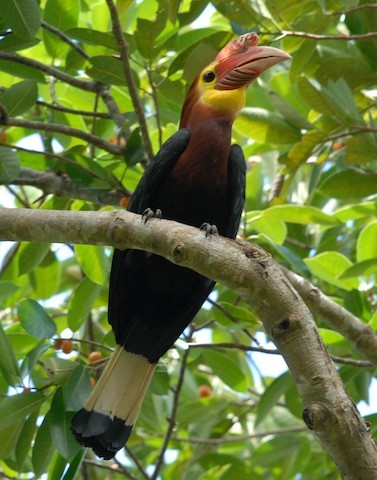
sources under cut
Red-crested Turaco Propaganda
eBird Sightings - 106
IUCN Status - Least Concern
Location: Africa - Northwest Angola
"looks like a mango"
Writhe-billed Hornbill Propaganda
eBird Sightings - 31
IUCN Status - Critically Endangered
Location: Philippines - Panay and Negros islands
Thought to be rare even before human disruption, this species is now suffering from extensive cutting and logging of its lowland forest habitat. It was also a victime of hunting and nest robbing for the pet trade, though local efforts have reduced nest poaching by 95%.
Image Sources: Turaco (Dubi Shapiro); Hornbill (Lorenzo Vinciguerra)
Other Sources: Birds of the World
#hipster bird main bracket#bracket: true a#poll#polls#round 1#red crested turaco#writhe billed hornbill
11 notes
·
View notes
Text
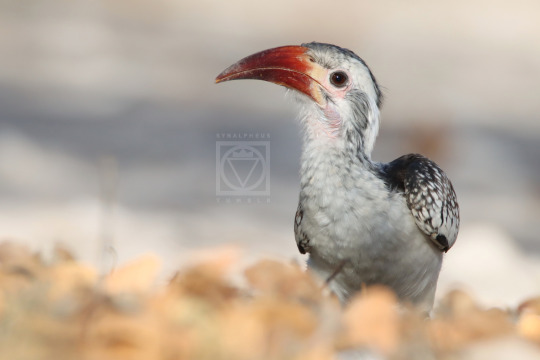

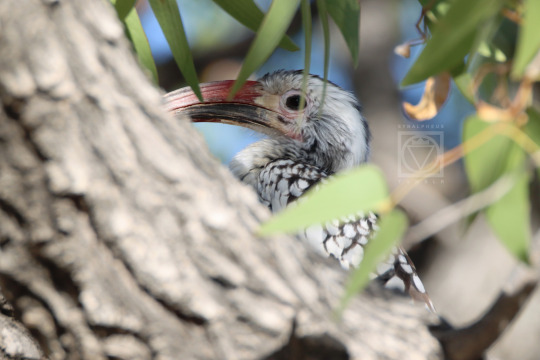
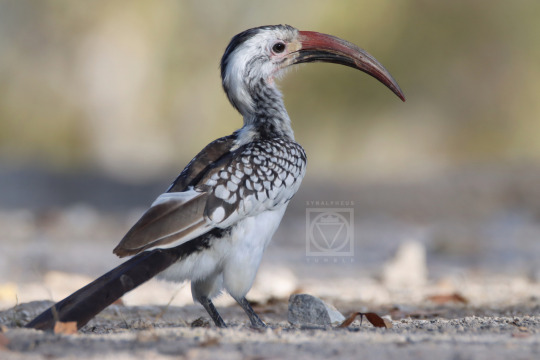
Southern Red-billed Hornbill (Tockus rufirostris). Etosha National Park, Namibia.
#synsphotos#bird#synsbirding#birding#wildlife photography#hornbill#southern red-billed hornbill#namibia#yes - i have been rolling around in the dirt on the campsite. why do you ask? :)
3 notes
·
View notes
Text
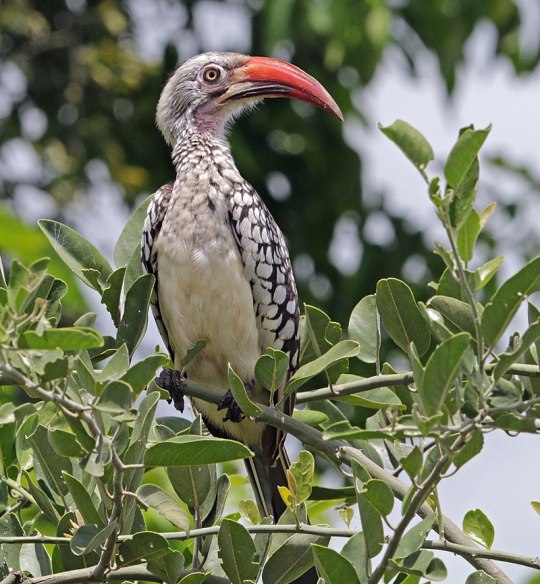
Posting birds until I hit post limit: Red-billed hornbill
3 notes
·
View notes
Text
Happy Love Hornbills Day!!!

#my art#autumn’s art#birdsona#hornbills#rhinoceros hornbill#Indian grey hornbill#knobbed Hornbill#red-billed hornbill#birds
0 notes
Text
Theriotype List
So, to start out, for context, I think we've all seen a skeptic comment about how all therians are only "cool" animals. I personally have always enjoyed keeping up with those with "rarer" theriotypes and even using them as examples when these kinds of arguments are brought up, so I've decided to do a little bit of a personal project, that being creating a huge list of the wide variety within the therian community. Below is the list I've created so far, sorted by general species, then adding in subspecies/breeds, all in alphabetical order.
Please keep in mind and understand that for now, I am only putting Earthen animals on this list, mainly so I and the post can keep up, because there's a LOT here already and I know there are hundreds more out there. This list does need more entries though. If you have a theriotype that you don't see on this list, please comment or reblog and let me know so I can add it! You can follow and find it with the tag "foxskys theriotype list".
Adder - European Agouti Alligator - American Alpaca Ankylosaurus Anteater Argentavis Armadillo - Three-banded Arthropleura Axolotl Badger - American - European - Honey - Japanese - Sunda Stink Baryonyx Bat - Evening - Flying Fox - Vampire Bear - Black - Brown - Polar Bee - Bumble - Honey Beetle - Dor - Stag Binturong Bison - American Bonobo Butterfly - Buckeye Caiman Caracal Cat, Domestic - Bombay - Himalayan - Japanese Bobtail - Lykoi - Maine Coon - Norwegian Forest - Oriental - Ragdoll - Shorthair - Turkish Van Centipede - Amazonian Giant - House - Japanese Giant - Red-headed Cheetah Chickadee Chimpanzee Chipmunk - Eastern Cicada - White Ghost Coatimundi - White-nosed Cockroach Coot - European Cow - Holstein Friesian Coyote Coywolf Crocodile - Nile - Saltwater - Siamese Crow - American - Hooded Cryodrakon Damselfly - Blue-tailed Deer - Axis - Caribou - Hog - Marsh - Red - White-tailed Deinonychus Dilophosaurus Dingo Dog, Domestic - Alaskan Malamute - Australian Shepherd - Beagle - Belgian Malinois - Bernese Mountain - Blue Bay Shepherd - Border Collie - Borzoi - Carpathian Shepherd - Cavalier King Charles Spaniel - Czechoslovakian Wolfdog - Dalmatian - Doberman - German Shepherd - Golden Retriever - Greyhound - Husky - Irish Wolfhound - Karst Shepherd - Nova Scotia Duck-tolling Retriever - Saluki - Samoyed - Sighthound - Silken Windhound - Wolfdog - Yorkie Dolphin - Amazon River - Common Donkey Dove Duck - Mallard Eagle - Bald - Golden Elk - American - Irish Eusmlius Fish - Arowana - Barbel - Betta - Bichir - Bristlenose Pleco - Carp - Hag - Koi - Pike - Salmon - Zander Fly - Blue Bottle - House Fossa Fox - Arctic - Bat-eared - Blanford's - Corsac - Crab-eating - Gray - Red, American - Red, European - Swift Gecko - Day Goat Golden Cat - Asiatic Goose - Canada Gorilla Grackle Grebe - Pied-billed Guinea Pig Hamster Hare - Brown - European Hawk - Red-tailed Hawk-Eagle - Changeable - Wallace's Hedgehog Homotherium Hornbill Hornet - Bald-faced - European Horse - Akhal-Teke - Clydesdale - Drum - Mustang Hyena - Aardwolf - Brown - Spotted - Striped Ichthyovenator Iguana Isopod Jackal - Black-Backed Jaguar Jay - Blue - Florida Scrub Jellyfish - Moon - White Spotted Jerboa Kangaroo Kaprosuchus Katydid Kestrel - Eurasian Ladybug Lemur - Black-and-white Ruffed - Red-bellied - Red-ruffed Leopard - African - Clouded - Snow Lion - African - American - Mountain Lynx - Bobcat - Canadian - European - Iberian Macaw - Blue-and-Yellow - Hyacinth - Scarlet - Spix’s Magpie - American - Eurasian - Yellow-billed Margay Marten - American Pine - European Pine - Japanese - Yellow-throated Microraptor Millipede - Crested Mink - American - Sea Monkey - Capuchin Moth - Cecropia - Cinnabar - Common Domestic Silk - Gold - Luna - Rosy Maple - Satin Mouse - Harvest - Hazel Dormouse Muskrat Nautilus Newt - Marbled Octopus - Mimic Opossum Orangutan Osprey Otter - Giant - River - Sea Oviraptor Owl - Barn - Burrowing - Snowy - Tawny Panda - Giant - Red Pangolin - Black-bellied - Tree Parpsauropholus Parrot - Kea Peacock/fowl Pigeon Pitohiu - Hooded Plateosaurus Possum Pterosaur Pufferfish Python - Ball Rabbit - Lionhead - Lop-Eared Raccoon Raven - Common Ray - Sting Rhamphorhynchus Sable Scorpion Sea Lion Sea Slug Seagull - Greater Black-backed Seal - Harbor - Weddell Serval Shark - Chain Catshark - Nurse - Oceanic Blacktip - Sicklefern Lemon Sheep - Bighorn - Domestic - Hebridean - Herdwick - Mouflon Sinosauripteryx Skink - Blue-tailed Snake - Banded Sea Sparrow - Common House Spider - Black Widow - Orb Weaver Spinosaurus Squid Squirrel - Eastern Fox - Finlayson's - Gray - Red Stoat Stork - Shoebill Styracosaurus Tamarin - Golden Lion Terrorbird Tiger - Bengal - Siberian - Sumatran Toucan Tyrannosaur Uromastyx Vulture - Bearded - Black - Turkey Wasp - Potter Weasel Whale - Killer - Minke - Pilot - Right Whiptail - New Mexico Wolf - Alaskan - Arctic - Coastal - Eastern - European - Gray - Himalayan - Labrador - Mackenzie River - Maned - Mexican - Northern Rocky Mountain - Northwestern - Red - Tundra Wolfdog Wolverine Zebra - Grevey's - Mountain - Plains
#therian#therianthropy#therian community#alterhuman#alterhumanity#alterhuman community#nonhuman#nonhuman community#foxskys theriotype list
402 notes
·
View notes
Text

Inktober 2024 - Day 16 ✨
Southern Red-billed Hornbill (Tockus rufirostris)
#art#artists on tumblr#my art#artwork#sketch#sketchbook#traditional art#traditional illustration#traditional drawing#traditional sketch#inktober#birds of tumblr#bird art#bird drawing#bird#birds#birbs of tumblr#birb art#cute birbs#birblr
205 notes
·
View notes
Text
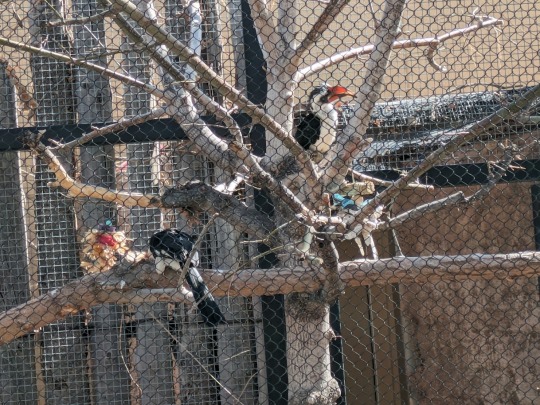
73 notes
·
View notes
Text
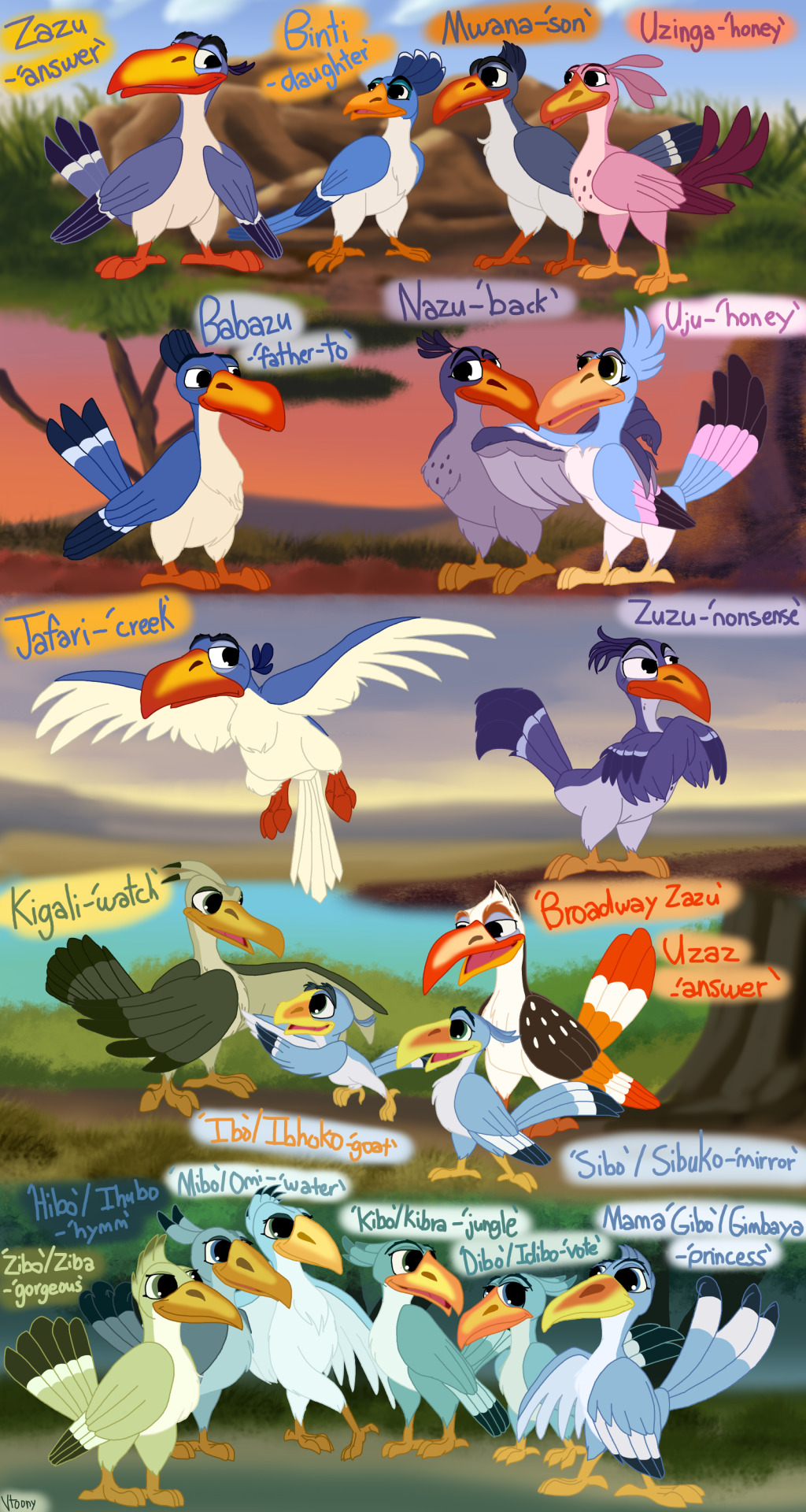
Decided to challenge myself by drawing every single TLK character out there, up until this point in time, and post it here. You can see the finished project on my main account, though I figured to post it on my tumblr just show I could proudly show off my work and a few of my head canons.
Here are all the hornbills across TLK:
Starting off is the OG 'red-billed' hornbill, majordomo for Mufasa and Simba's reign, the king's left-wing bird, Zazu(answer-Igbo) and nieces and nephews, Binti, Mwana, and Zinga. Binti(daughter) originally comes from the January 1996 draft of TLK2 and is meant to be Zazu's girlfriend in this, however I hold the idea that Zazu is a "I'm married to my job" guy, though he is slowly getting into spending time with Timon's mom as he begins to consider retirement. Binti here is Zazu's niece though Babazu, and while she gets along with her uncle, she's too much of a free-spirit to be bogged down by such a hefty position like king's left hand man. Jicho and her brother Mwana will be a more suitable successors. Mwana's(son) is more diligent, knowledgeable, and calm unlike his sister, and also took an immediate liking to his uncle and expressed an interest in the tasks associated with being a majordomo, so Zazu agreed to have him apprentice under him as a future scout. He doesn't belong to TLK media and is my character, but I figured I'd add him and Zazu's father just to fil, in the family tree. Lastly we have Zinga, Zinga/Uzinga(honey), Zazu's niece and these two's cousins from from "The Bird-Sitters". Uzinga is very mischievous and daring, picking that from her stepmom and occasionally making it difficult for others to talk/control her, but she's very sweet and enthusiastic, able to endear herself to others quickly, and is best friends with her cousin and Babazu's daughter Binti.
Next up are Zazu's siblings, Babazu(father-to) and older sister Nazu(back-Igbo), mentioned in the phrase "There's one in every family, sire. Two in mine, actually", though apparently they were meant to be the names of the deleted tickbirds on Herr Rhino who egged him on as he chased Simba and Baasho. For the longest time they weren't speaking with Zazu, mostly since he originally didn't decide to try to be the next majordomo while they both were attempting to learn from their mother, the previous majordomo of Ahadi/Uru's reign, though Zazu just happened to help Mufasa out with finding and helping out his future wife Sarabi and thus scored the position. The two eventually moved out and it wouldn't be until a few seasons later, when they had both started families and Zazu was well established as Mufasa's majordomo that they began to reconnect, trying to rebuild the strained relationship. The statement Zazu says about them to Mufasa is in reference to how the two purposefully missed out his announcement and introduction ceremony to the Pridelands out of envy, something both of them regret now. Beside Nazu is her wife Uju(honey), who was Zazu's girlfriend from "Heartbreaker Zazu". They did use to date, though between his demanding job and their opposite personalities(Zazu being more strict and rule-abiding while Uju being more free-spirited and daring), the two amicably broke up. She would eventually get together with Zazu's sister Nazu and together they had Zinga together.
Next up are Zazu and his siblings' parents, Jafari(creek) and Zuzu/Uzuzu(nonsense). Zuzu was Ahadi's majordomo from "A Tale of Two Brothers", and Zazu's predecessor. Jafari is my own character, though I figured to add him in just to ensure consistency with the family. He is the kind, supportive, and emotional parent compared to his strict, overbearing ex-wife. He's the more popular grandparent, getting involved in both his kids and grandchicks lives and being there to be the supportive dad. As for Zuzu, she's spent her entire life being the ideal hornbill majordomo. She's built up a reputation of being reliable, knowledgeable, and an involved majordomo, which is to say that she is a busybody, gossip, and often snobbish. She was insistent on having a legacy of majordomos within the pride, so she really pushed for her chicks to follow in her wingbeats, causing a wedge to form between them that only increased when Zazu proved himself to be the next candidate for the role, and so she devoted most of her time and energy into grooming him into being the next majordomo. While Zazu can say he enjoys his work, his mother's overbearing, snobbish, and insensitive teaching methods formed a rift between them, and finally, after mouthing off a few too many times about the new king Mufasa, Zazu finally tore her a new one and demanded she leave him alone. Infuriated and humiliated, she did. Zuzu returned back to stay with Jafari in the time being. Jafari had divorced her during the early part of Mufasa's reign after seeing how her actions had turned their chicks against them and moved with his kids to a neighboring territory, though being the gracious, kind soul he was, allowed her to stay close by, though their kids keep her on a leash when it comes to interacting with her grandchicks. At the moment, she's seen as the crabby old lady whom her kids keep a close eye on to ensure she isn't trying to stir up unhealthy competition or unhealthy goals in.
Next up we have Kigali(watch-Igbo), a Southern yellow-billed hornbill from Operation Pridelands, one of Zazu's scouts and closest childhood friend. Kigali spent most of his life exploring and experiencing the world, so when Zazu reunited with him after his release from Scar's tyrannical rule, he entrusted Kigali with help trying to find and bring back the the herds and animals which had left to return back to the Pridelands with the message that there was a new king. Kigali is friendly, wise, and very knowledgeable, though he also has a quick wit and tendency to tease. He and Zazu often will greet each other with snarky, friendly insults, though they are all in the spirit of fun. He also has similar British accent. He also is the father of several chicks, to which Zazu plays uncle for them too.
Beside him is my take on TLK 2019/Broadway Zazu, so meet Uzaz(answer). A red-billed hornbill/Von der Decken's hornbill hybrid majordomo for the Zinari Pride of my "TLK2 but slightly to the left" project. Uzaz is snooty, condescending, and prideful, though he is able to get the job done. He does have a rivalry with the neighboring pride's majordomo, a malachite kingfisher named Zuza, though over time they're relationship has gone from rivals to 'rivals', but with a softer edge'. The two constantly make jabs and pecks at each other, critiquing the other's style, methods, appearance, likes/dislikes, choice of hangout place, choice of best romantic areas, what date is their first meeting anniversary... yeah the two get married in the end.
Lastly are Kigali's many, many chicks from "Greedy Is As Greedy Does". Sort a Billy Goats Gruff, but with hyenas and hornbills, the our hyena trio of Shenzi, Banzai, and Ed find little Ibo/Ibhoko(goat-Zulu) by his lonesome and plan to eat him, but he namedrops his bigger sister Sibo/Sibuko(mirror-Zulu), and the hyenas agree to 'help him find' his sister. When they do, Sibo mentions their big sister, Kibo, prompting the hyenas to go and find her, and the two eventually lead the hyenas to their flock and massive family, whereupon, seeing the multitude of hornbills, promptly drop the two chicks off and flee for their lives. Ibhoko and Sibuko are the youngest and last chicks of the two, though the Kigali and his wife Gibo/Gimbaya(princess-African) have seven lovely chicks, composed of six older daughters and the youngest their son. From oldest to youngest, left to right, we have Zibo/Ziba(gorgeous-Arabic), Hibo/Ihubo(hymm-Zulu), Mibo/Omi(water-Yoruba), Kibo/Kibra(jungle-Arabic), Dibo/Idibo(vote-Yoruba), Sibo,Sibuko, and Ibo/Ibhoko. Their mother started this tradition of naming her chicks and give them nicknames of 'letter' + -'ibo'. Each one of their chicks are are beautiful as their mother and as strong as their father, or vice versa as their mother would say. I used the wiki with the comic for reference for the names, though aside from Ibo and Sibo none of them have any identifying features, so I kinda had to use the other hornbills in the background and go off from there and my design for Kigali. Also the wiki does mention several names for Ibo/Sibo's sisters that aren't in the comic itself, which I'm gonna assume is an error, though I decided just to go with both the names mentioned on the wiki and said in the comic. Gibo, for example, was supposed to be a sister, but is only mentioned in the wiki and not in the comic, so I decided just to add her in and make her Kigali's mate and the mother of the seven. They do go by the nicknames as a family tradition, though mostly its used by Kigali.
7 notes
·
View notes
Text
🧡🐦Here's RUDI - a male Here's RUDI - a male red-billed hornbill from the Wrocław Zoo 🧡🐦
ZOO Wroclaw
17 notes
·
View notes
Text

Northern red-billed hornbill
Samburu National Reserve, Kenya
28 notes
·
View notes
Text

November 1, 2023 - Tanzanian Red-billed Hornbill (Tockus ruahae) Found in Tanzania, these hornbills live in savannas and woodlands, especially those with baobabs and acacias. They feed on insects, including ants and beetle larvae, as well as seeds, and may also eat other arthropods, small vertebrates, and fruit, like closely related species. Their breeding behaviors have not been studied, though they likely nest in cavities.
#tanzanian red-billed hornbill#hornbill#tockus ruahae#bird#birds#illustration#art#grassland#birblr art
78 notes
·
View notes
Text
Feather-ary - a bird themed art challenge
No fancy graphics or anything because I made this mostly for myself, but others can feel free to use it if they want. I've really enjoyed doing these bird-themed challenges in the past so this time I've picked out a bunch that I thought would be fun to try.
Great Hornbill
Red-Cheeked Cordon-Bleu
Strawberry Finch
Ashy Wood Pigeon
Black Baza
Pin-Tailed Sandgrouse
Pink-Spotted Fruit Dove
Red-Throated Piping Guan
Yellow-Thighed Brush Finch
Buffy Fish Owl
Sumatran Ground Cuckoo
Jackson's Widowbird
Pyrrhuloxia
Lappet-Faced Vulture
Emperor Goose
Purple-Throated Fruit Crow
Long-Tailed Silky Flycatcher
King Vulture
Capped Heron
Galah Cockatoo
Bearded Tit
Chestnut-Colored Woodpecker
Wallcreeper
Red-Tailed Black Cockatoo
Araripe Manakin
Malay Crested Fireback
Scissor-Tailed Flycatcher
Long-Billed Woodcreeper
#art challenge#featherary#i'll be doing the same as the last two as far as drawing goes#a bunch of aqori cosplaying so i picked birds that i thought would give me interesting fashion options#shouldnt be any repeats from previous challenges either
3 notes
·
View notes